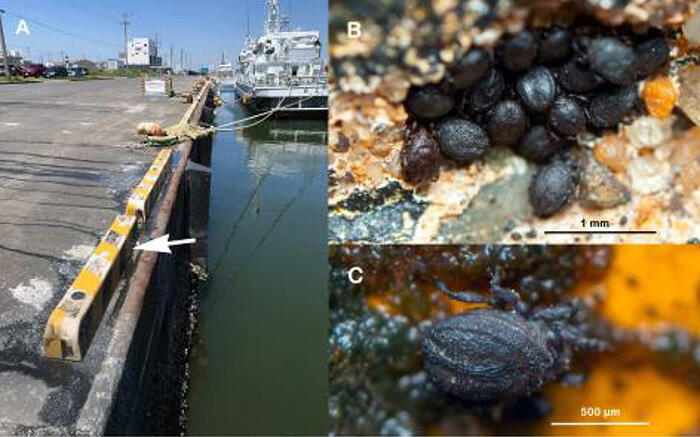Professor Satoshi Shimano, Science Research Center, Hosei University, has discovered a new species of coastal mite (Oribatida). The new species was recorded by a Japan-Austria research team and led to scientific findings published in the Japanese Society of Systematic Zoology journal, Species Diversity.

Shimano's attention was captured by photos posted on the social media platform Twitter by amateur photographer Takamasa Nemoto of Matsudo City, Chiba Prefecture, which he noticed was a coastal mite of the Oribatida genus. Shimano's research team previously found a new species of coastal mite in Hokkaido, a first for Japan, but coastal mites have never been found south of Hokkaido in the East Asian region. Professor Shimano said that he thought it could be a new species of mite due to subtle differences in morphology from other known coastal mites.
Mr. Nemoto was on holiday at Choshi Outer Port fishing off the wharf at the time, but not having any luck. He has a keen interest in small arthropods so he took a picture of the mites and tweeted it out. Shimano later happened upon the tweet and immediately got in touch by Twitter. A few days later, Shimano traveled to Choshi Outer Port to collect the mites. As the two did not know one another, Nemoto used Twitter's messaging service to show Shimano the exact location of the mites. After identifying the location, Shimano collected mite specimens from Choshi Outer Port and some of the seawall.
After collecting the samples, he made a check with Lecturer Tobias Pfingstl of the Institute of Biology, University of Graz, Austria, confirming that it was a new species. They designated the new species Ameronothrus twitter in view of the role of Twitter in its discovery.
Oribatida mites are harmless to humans and feed on fallen leaves, lichen and other organic matter. They are also known as ecological indicator species, whose presence implies a well-functioning natural environment. The presence of an undiscovered species in Choshi is indicative of the well-preserved natural coastal environment.
Such a species discovery using social media has only a handful of precedents, but from the perspective of citizen science, it is hoped that it will be used a lot more in future.
This article has been translated by JST with permission from The Science News Ltd.(https://sci-news.co.jp/). Unauthorized reproduction of the article and photographs is prohibited.




